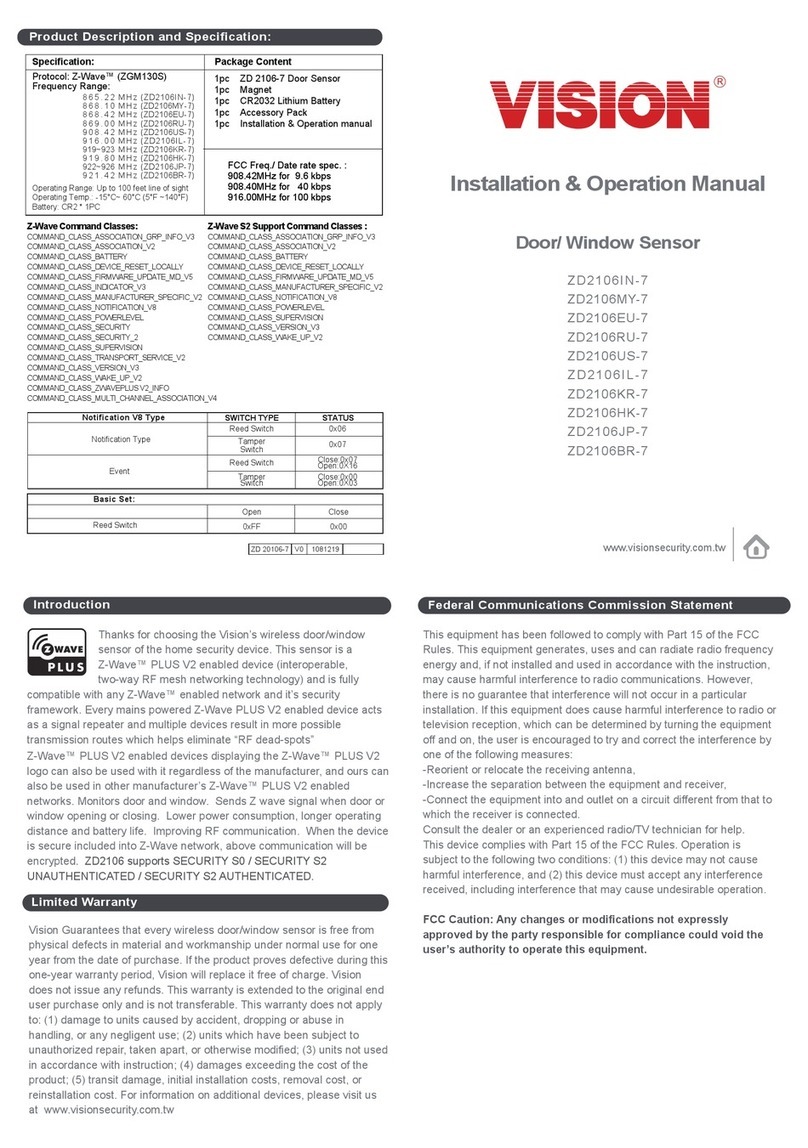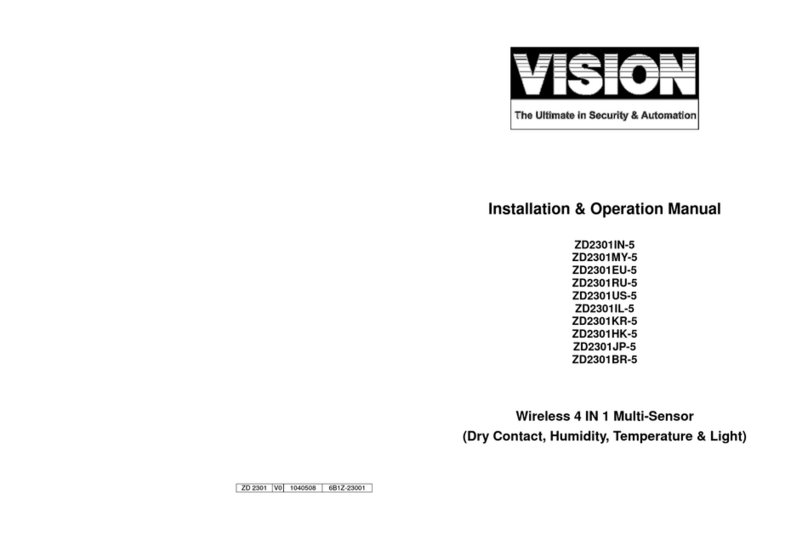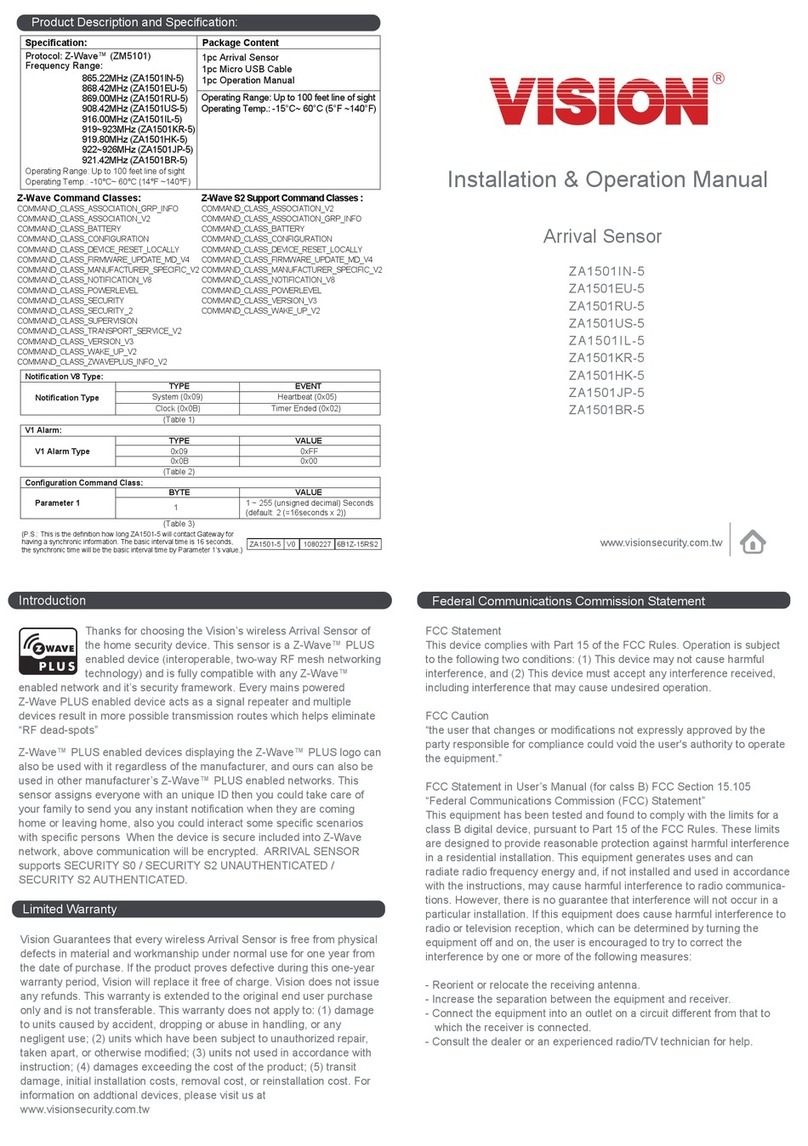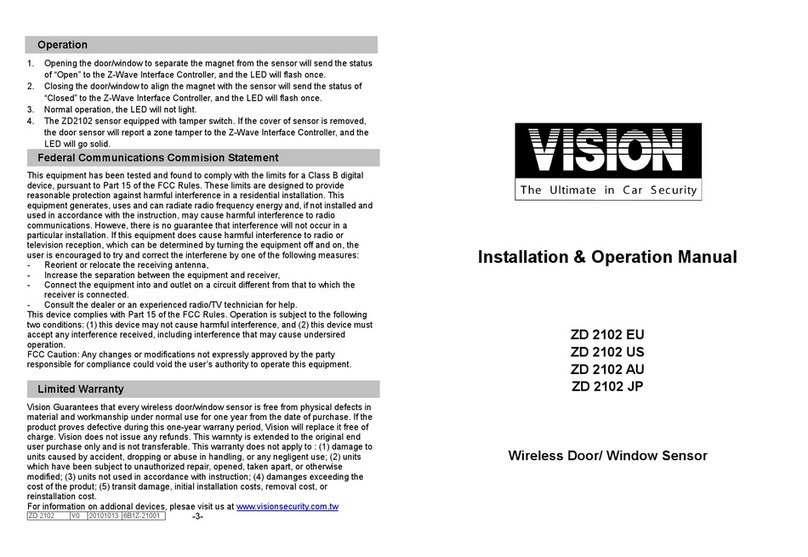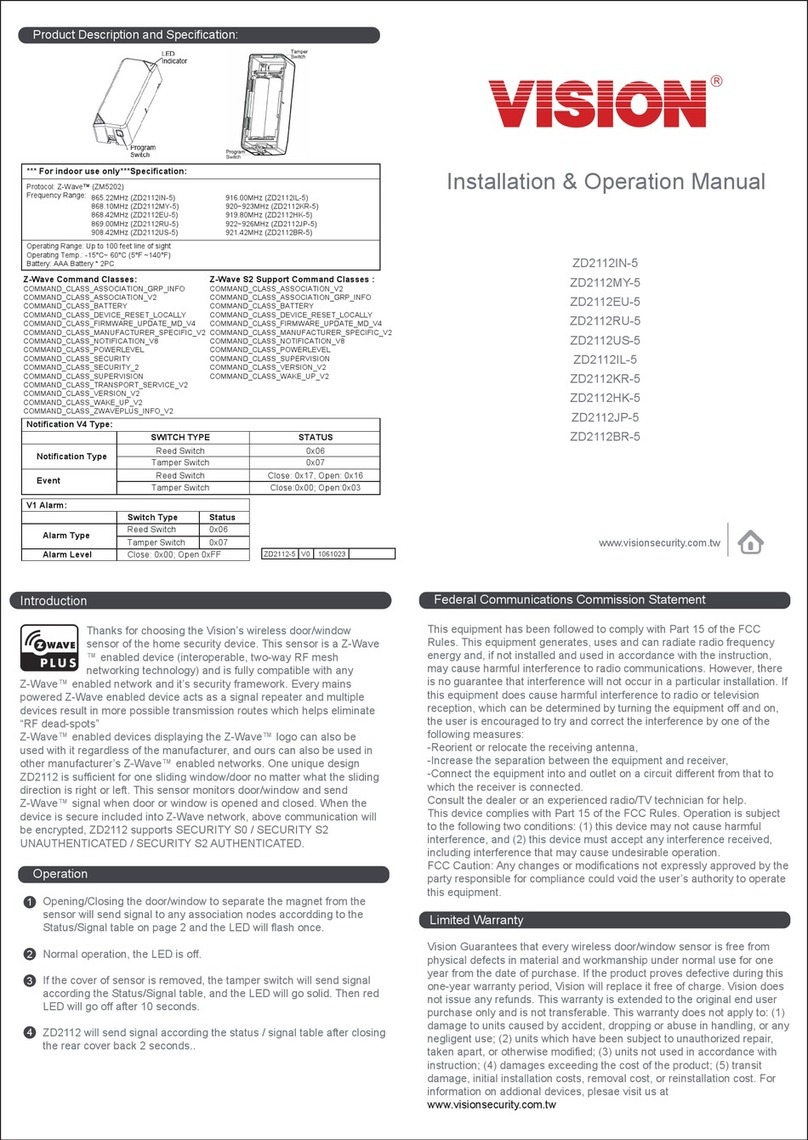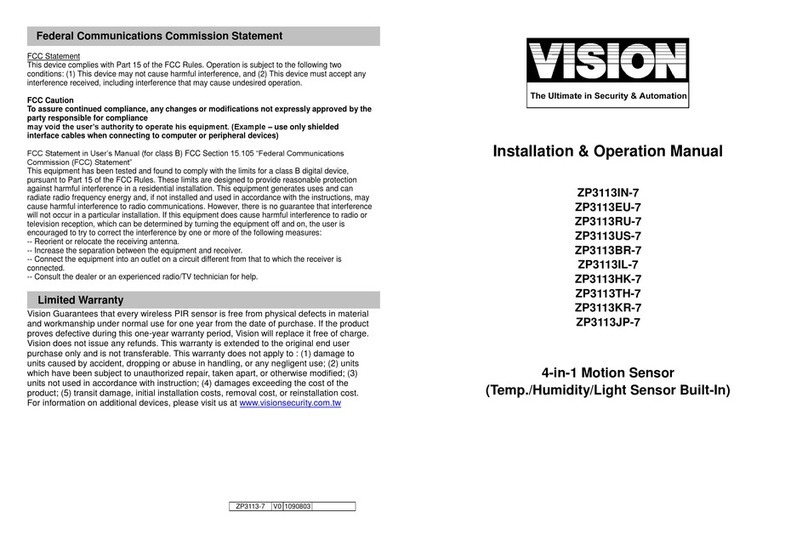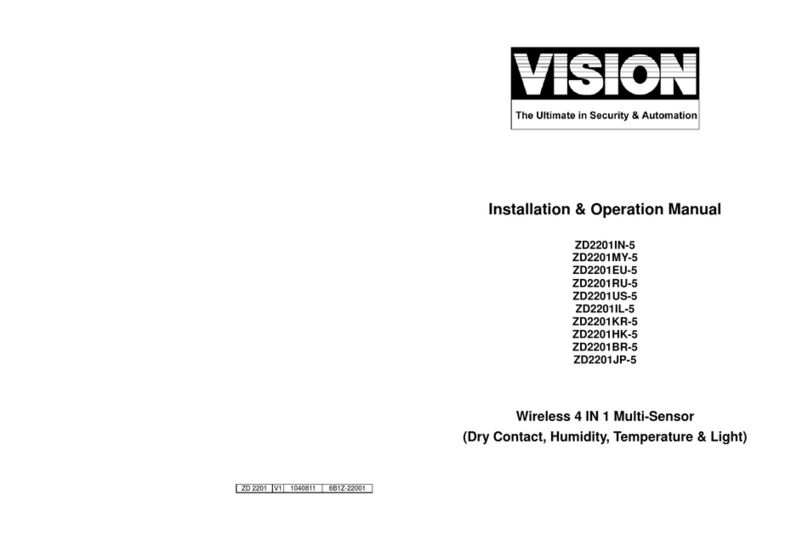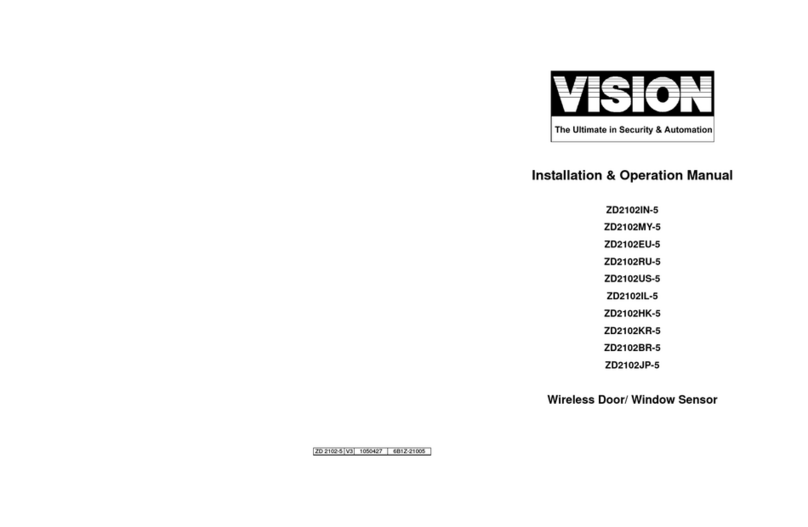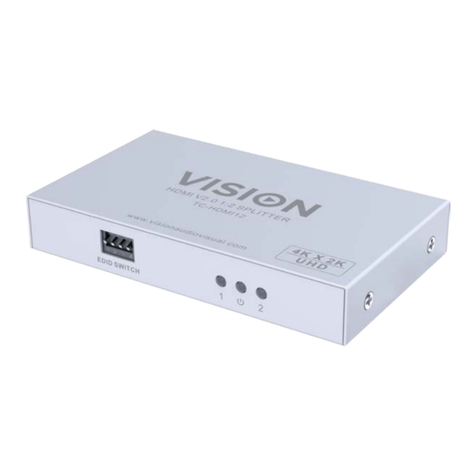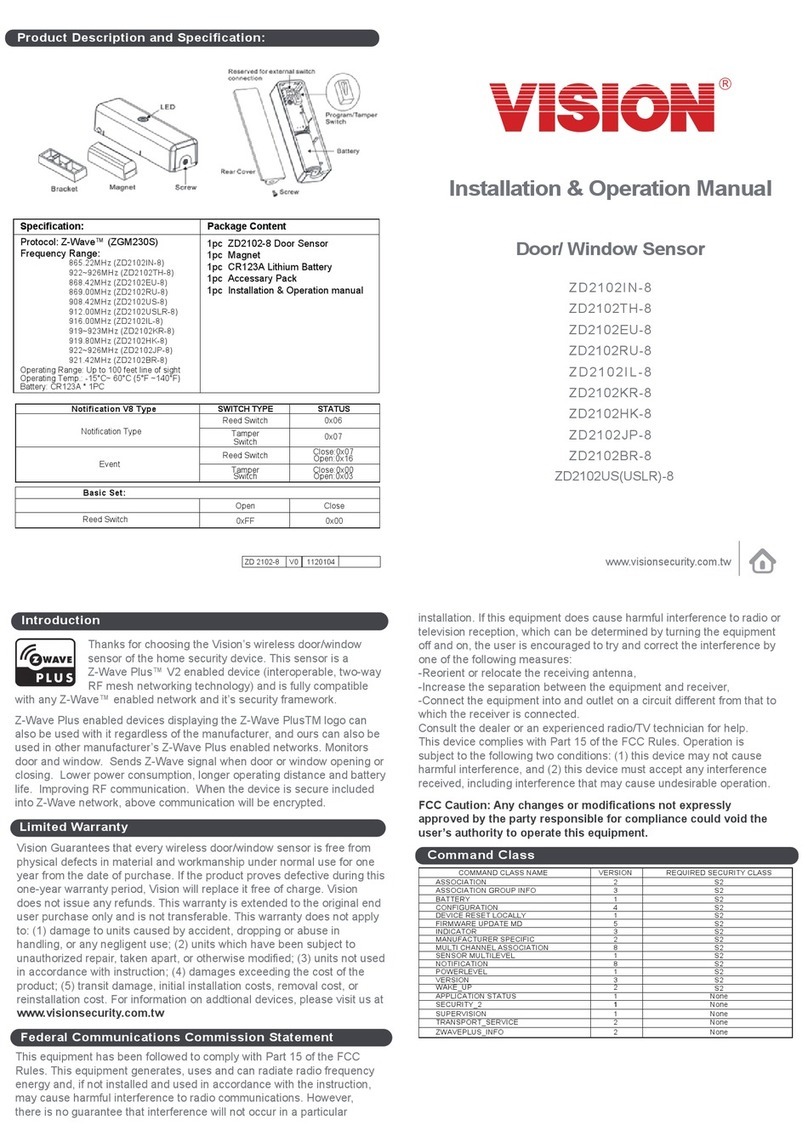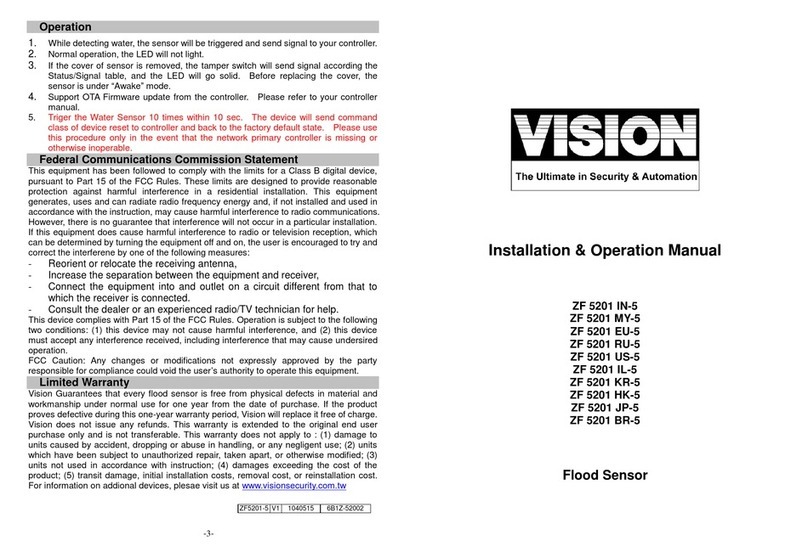
Introduction
Thanks for choosing the Vision’s flood sensor of the home security device. This sensor is a
Z-Wave™ enabled device (interoperable, two-way RF mesh networking technology) and is
fully compatible with any Z-Wave™ enabled network. AC powered Z-Wave enabled
devices act as a signal repeater and multiple devices result in more possible transmission
routes which helps eliminate “RF dead-sports”
Z-Wave™ enabled devices displaying the Z-Wave™ logo can also be used with it
regardless of the manufacturer, and ours can also be used in other manufacturer’s
Z-Wave™ enabled networks. This sensor sends Z-Wave™ signal while detecting water.
The sensor can be put under the refrigerator, and it will triggered while detecting the
leaking water. You can also install the sensor at anywhere it leaks; with this sensor you
can avoid loss before it flood.
Product Description and Specification
Protocol: Z-Wave™ (ZM3102N)
Frequency Range:
865.22 MHz (ZF5201IN)
868.42MHz (ZF5201EU)
869.00 MHz (ZF5201RU)
908.42MHz (ZF5201US)
916.00MHz (ZF5201IS)
920.00 MHz (ZF5201JP)
921.42MHz (ZF5201BR)
Operating Range: Up to 100 feet line of sight
Operating Temp.: -15°C~ 60°C (5°F ~140°F)
ZF 5201 sensor
CR123A Battery
Installation & Operation manual
Adhesive tape for main unit
Screws for bracket of main unit
Screws for sensor
Z-Wave Command Classes:
COMMAND_CLASS_ALARM_V2
COMMAND_CLASS_ASSOCIATION_V1
COMMAND_CLASS_BATTERY
COMMAND_CLASS_MANUFACTURER_SPECIFIC
COMMAND_CLASS_SENSOR_BINARY (mapping COMMAND_CLASS_BASIC)
COMMAND_CLASS_VERSION
COMMAND_CLASS_WAKE_UP_V2
-1-
Status/ Signal (Alarm report)
Installation
Notice: If you install the entire Z-Wave™ system for the first time, please refer to the
installation guide of Z-Wave™ Interface Controller before installing ZF5201. For the first
time powers on, it will do auto-inclusion to the controller.
1. Fix the sensor on location you want, using the screws to fix it on the wall or floor.
2. Unscrew the screw fastening the rear cover and slide the rear cover down of main part and Insert a
CR123A battery into the battery compartment and LED will start to flash slowly, which means the
sensor has not yet been “inclusion”.
3. For “Inclusion”in (adding to) a network: Put the Z-Wave™Interface Controller into “inclusion”
mode, and following its instruction to add the ZF5201 to the controller. To get in the “inclusion”
mode, the distance between sensor and controller is suggested to be in one meter. Press the
program switch of ZF5201 for 1 second at least. The LED on the ZF5201 should go solid, if not,
please try again.
For “Exclusion” from (removing from) a network: Put the Z-Wave™ Interface Controller into
“exclusion” mode, and following its instruction to delete the ZF5201 from your controller. Press
the program switch of ZF5201 for 1 second at least to be excluded.
For “Association”: removing the cover of the ZF5201to get into the “Awake” mode, then put the
Z-Wave™ Interface Controller into “Association”, and following its instruction to associate the
ZF5201 with other device. Close the cover back after “association” done, afterward the ZF5201 will
get into “Sleep” mode for power saving. Support one association group (5 nodes).
”Awake” mode: it is to leave the “Sleep” mode by removing the cover of ZF5201, to allow the
Z-Wave™ Interface Controller to do “Inclusion”, “Exclusion”, “Association” and to reply and receive
the commands from controller.
4. Slide back the rear cover and screw fastening with the front cover of main part, the LED should go
off.
5. Put the main part at higher place for better RF range, and then use the adhesive tape to fix the
main part on the wall. -2-
